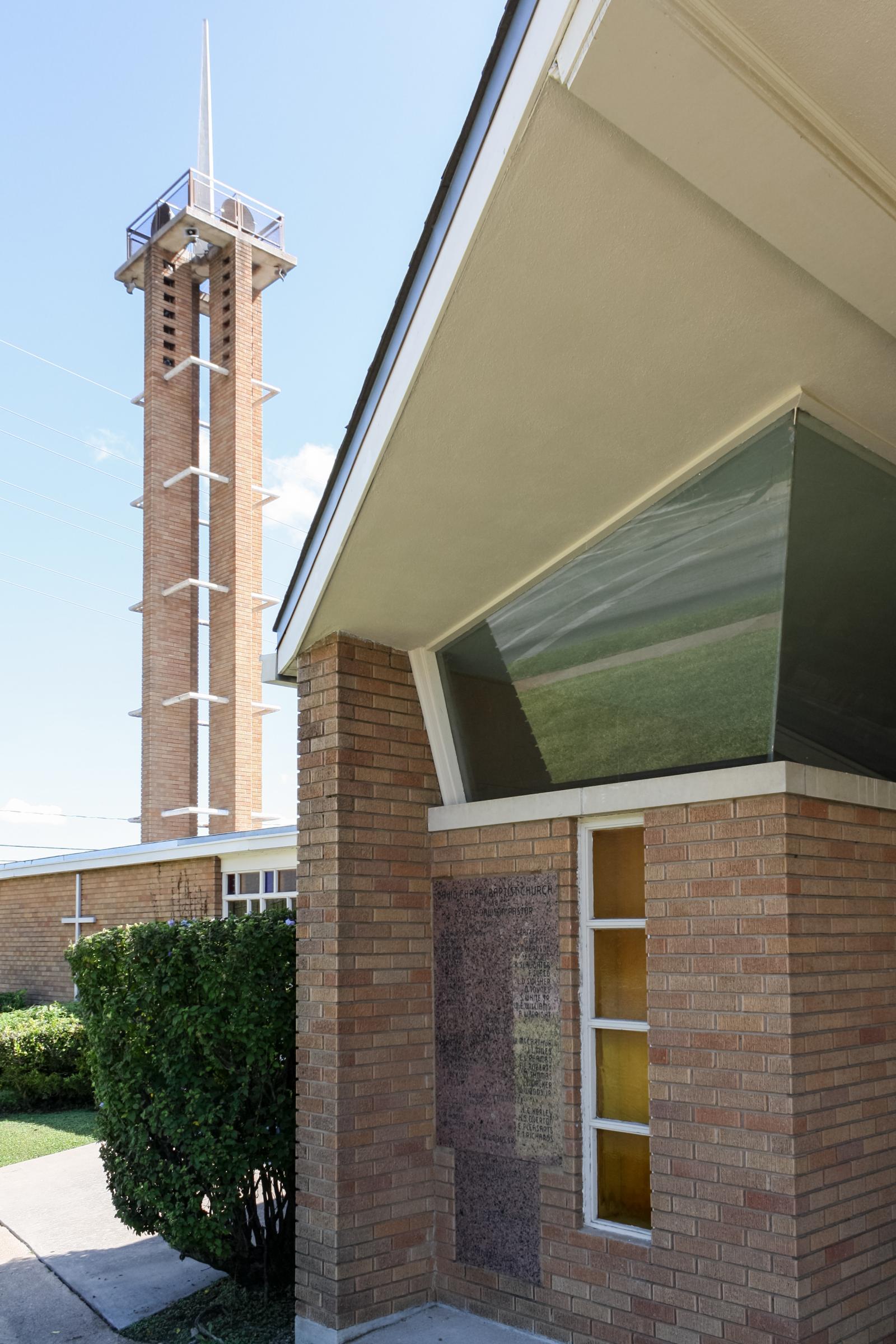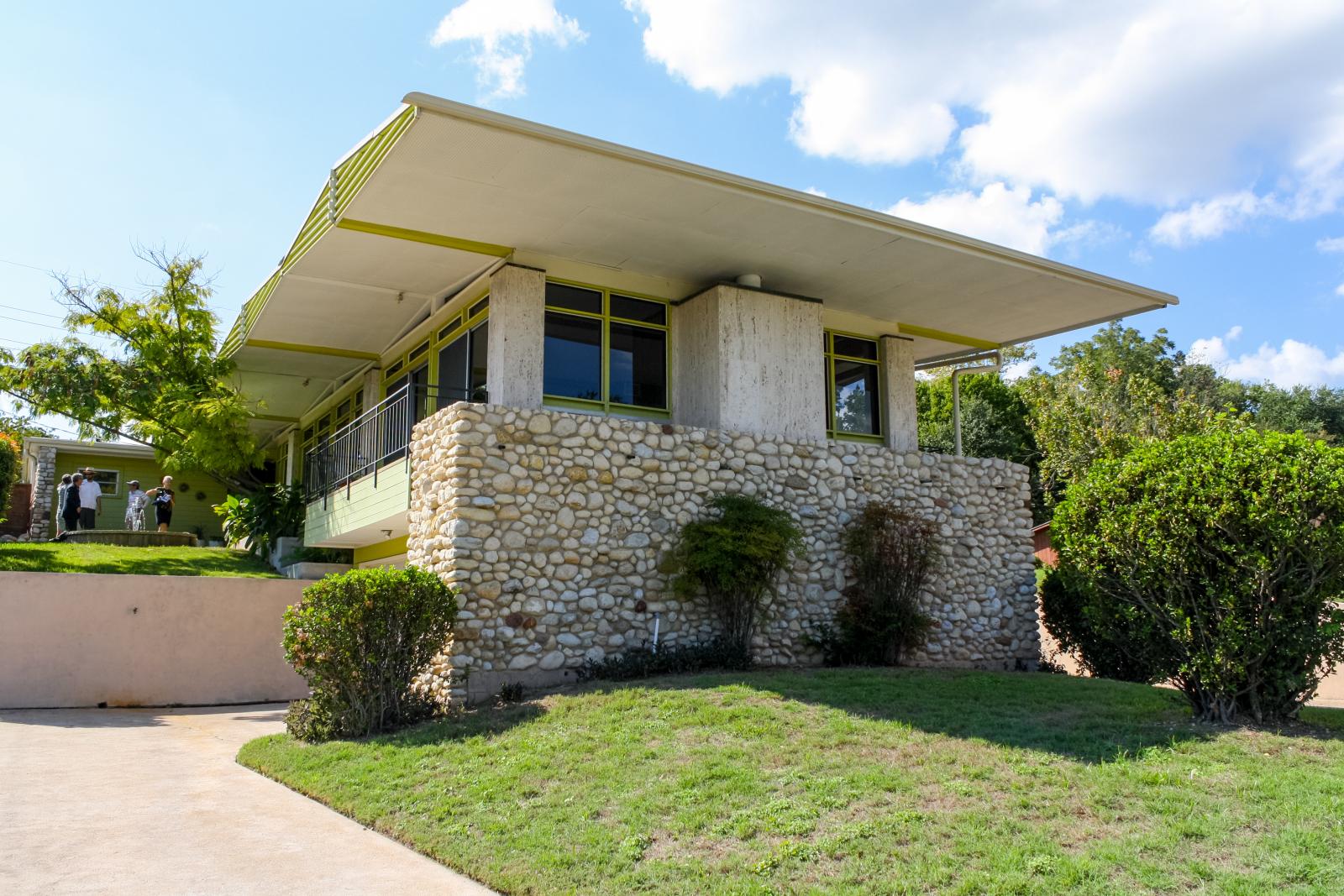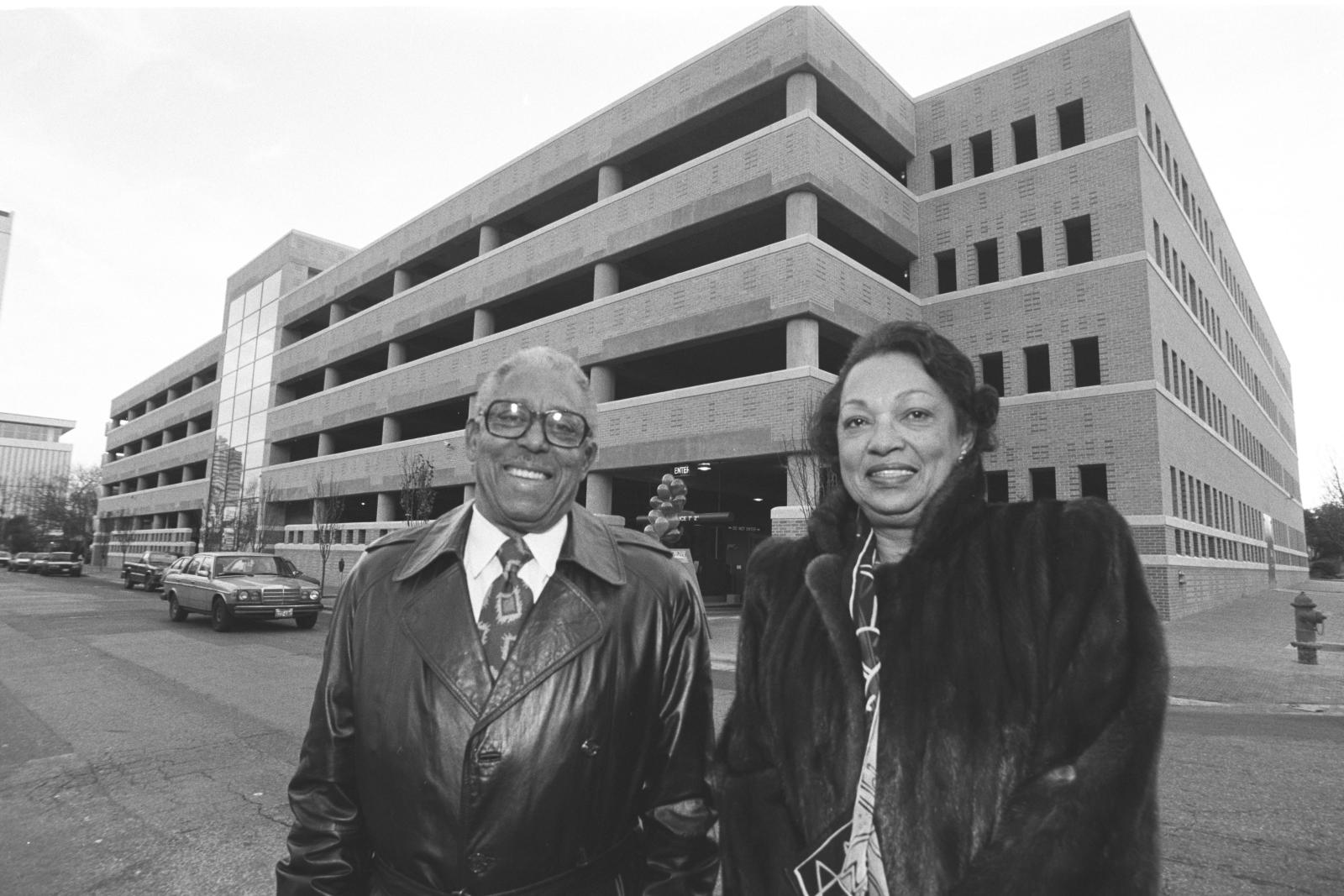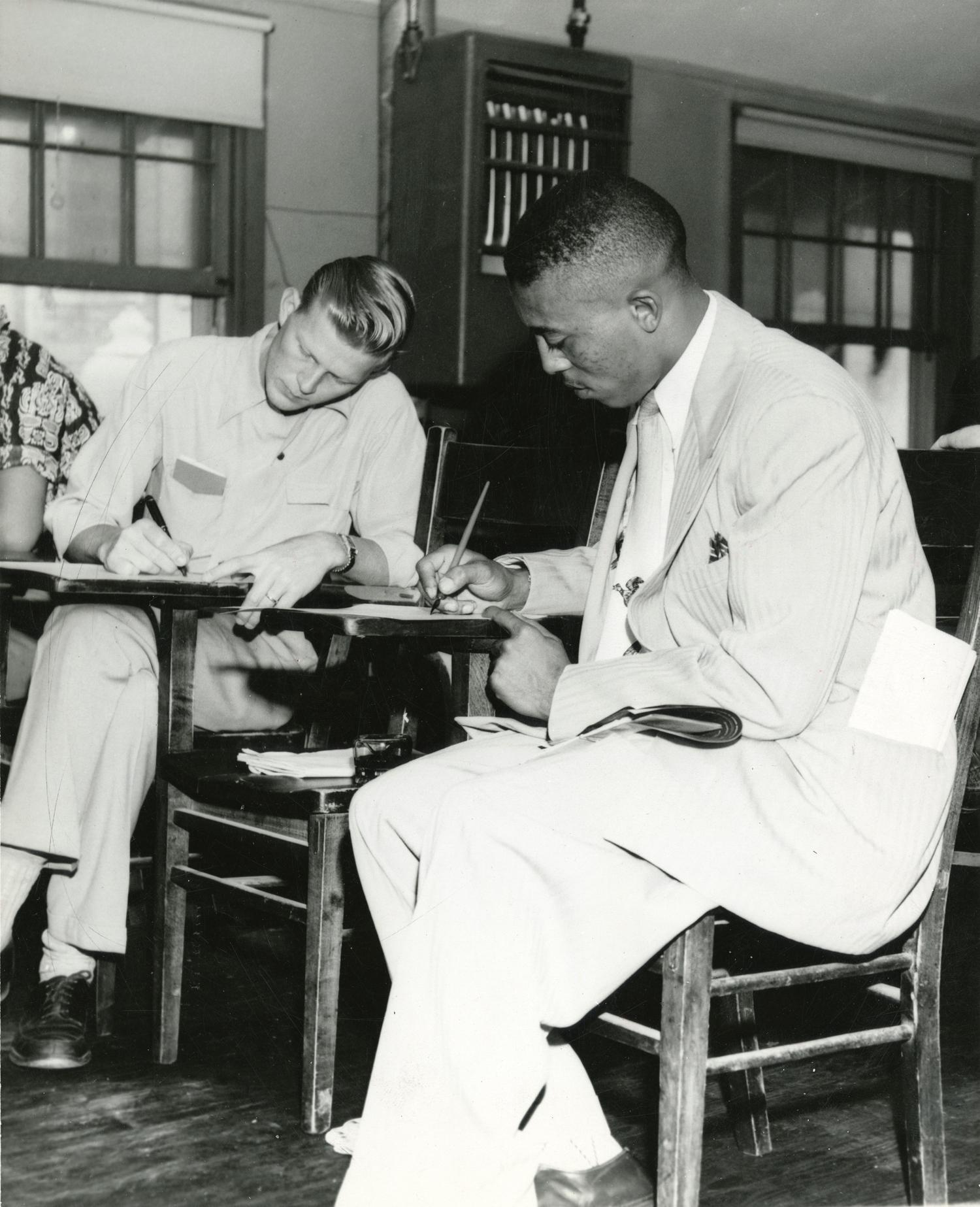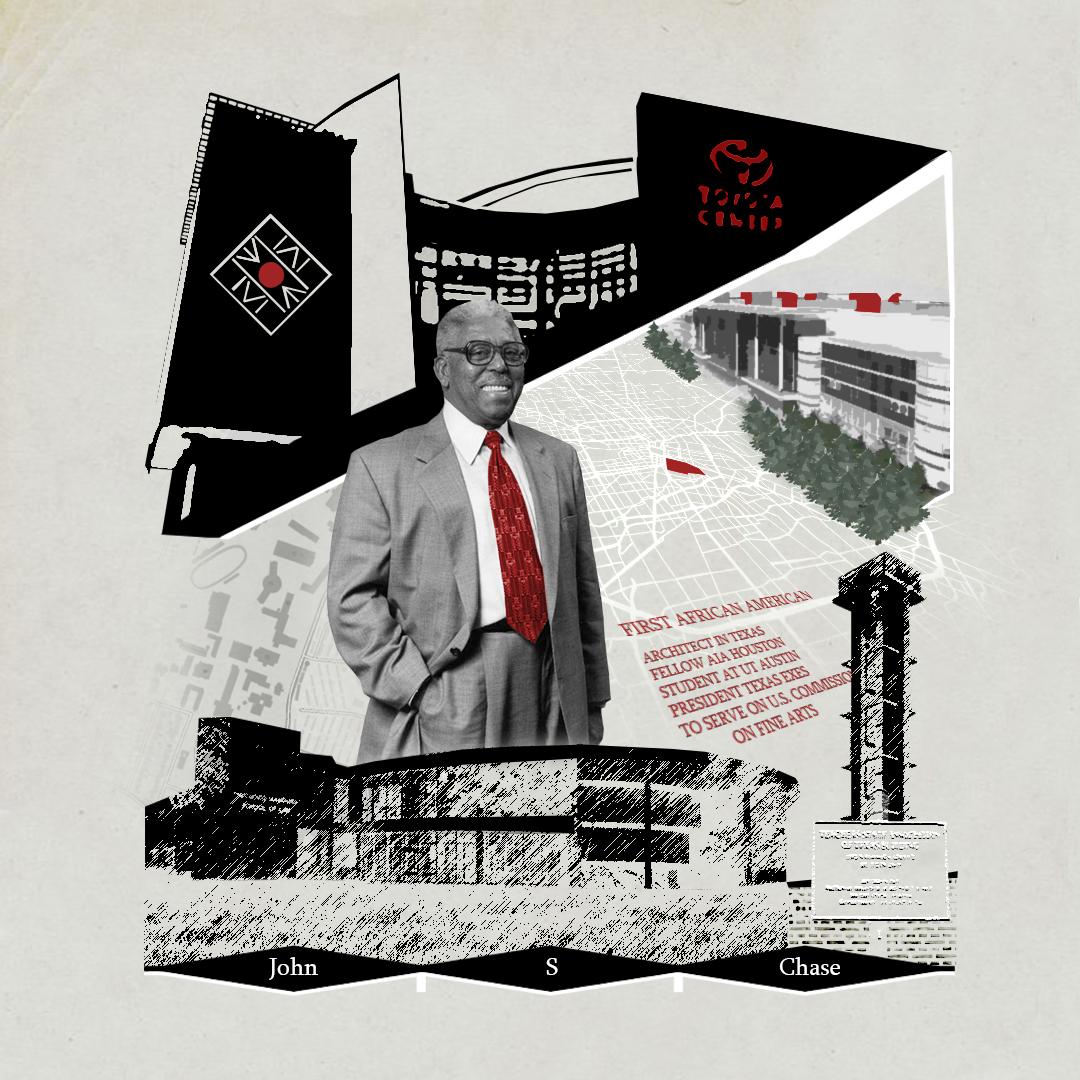The Life & Architectural Legacy of John S. Chase
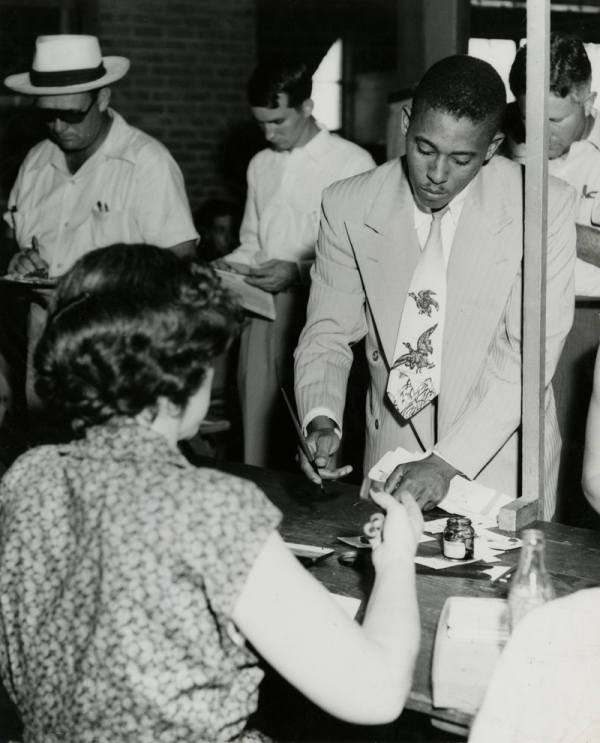
John Saunders Chase (1925-2012) was a man of firsts. He was one of the first Black graduate students to enroll at The University of Texas at Austin, the first African American to graduate from the School of Architecture, and, when none of the predominately white architecture firms would hire him after graduation, he took matters into his own hands, became the first Black licensed architect in Texas, and launched his own firm.
Throughout his long and prolific career, Chase’s work was known for being human- and community-centered. His architectural philosophy embraced the Usonian ideals of Frank Lloyd Wright and aimed to create bright, minimalist spaces that brought people together. Early in his career, Chase worked predominately on Black churches, which often served as the heart of the Black communities. Chase applied the ideas explored in his master’s thesis, “Progressive Architecture for the Negro Baptist Church,” in many of these early works including, the First Shiloh Baptist Church in Houston and the David Chapel Missionary Baptist Church in East Austin which remains standing on MLK Boulevard to this day.
Though many of Chase’s projects were built in Houston, where he relocated to start his own practice, East Austin still boasts a number of his modernist-influenced designs. In addition to the David Chapel Missionary Baptist Church, these include the landmark midcentury modern Della Philips House and the Irene Hill Thompson House, Olivet Baptist Church, and the building originally designed for the Colored Teachers State Association of Texas, now named the John S. and Drucie Chase Building and owned by The University of Texas at Austin to house the University’s Division for Campus and Community Engagement. Chase's firm also designed the San Antonio Parking Garage and Mike A. Myers Soccer Stadium and Track Stadium for the University of Texas. Before and during his graduate studies at UT, Chase worked as a draftsman for the Black-owned Lott Construction Company. His talent is visible in the Keystone Addition subdivision that was developed and built by Lott Construction and is still largely intact.
As his career progressed, Chase received larger commissions, taking on more commercial and institutional work. From the late 1950s to the late 1990s, Chase was tapped to design 21 buildings and performed at least 15 renovations for Texas Southern University, where he also taught, in addition to helping devise the campus masterplan. Other notable projects include the George R. Brown Convention Center and Harris County Astrodome Renovation in Houston as well as the Washington Technical Institute, Links Inc. National Headquarters, and Delta Sigma Theta Sorority Inc. National Headquarters all in Washington D.C. Chase was later awarded a commission to design the United States Embassy in Tunis, Tunisia, a fifty-million-dollar complex that was never built. All told, almost 300 known buildings or renovation projects can be attributed to John S. Chase’s firm, spread throughout the southeastern United States from Texas to Washington D.C., as uncovered by Assistant Professor Tara A. Dudley and mapped by students in her African American Experience in Architecture course for their “Mapping John Chase” project.
As the students note in their reflection on Chase’s work: “There exists a common denominator across all of John S. Chase’s work, from the First Shiloh Missionary Baptist Church to the Toyota Center: community. John S. Chase’s architecture is tailored to the local or regional community within which it exists. He would not adopt a geo-specific style per se, but his intentional designs elevate others. This is evident in the kinds of vernacular work for which he was willing to accept commissions and is perhaps additionally supported by his introduction to practicing architecture almost exclusively for the African American community. For Chase, his career truly began as the African American experience of architecture, and he took the communal ideal to his designs for school groups, church groups, and citizens of municipalities to make space for them, as opposed to himself.”
Throughout his career, Chase used his position to create opportunities for others, hiring minority engineers, architects, and draftsmen. Chase also co-founded the National Organization of Minority Architects (NOMA) along with 11 other architects at the AIA Convention in Detroit in 1971, and continued to advocate for and support minority architects throughout his career.
To further tell the story of Chase’s life and legacy, Dr. Dudley is currently working on the first biography of the pioneering architect. “This book, in particular, is a tremendous responsibility, and I feel it keenly to get it right,” Dudley noted in an interview about her research and work. “Not ‘right’ in that it’s the only story or that it needs to be a definitive thing; rather, I hope it encourages others to learn more about Chase on their own –but right in that it does him justice…I hope this book threads together his contributions to the field of architecture, his contributions to the Black community, and even more specifically, to the communities where he lived and for whom he designed.”
To learn more about the life and legacy of John S. Chase, visit the following resources:
- John S. Chase – The Chase Residence, by Professor David Heymann and Rice Architecture’s Stephen Fox, published by The University of Texas Press
- Alcalde Docs | The Story of John Chase, produced by the Texas Exes
- The John S. and Drucie R. Chase Building at UT Austin
